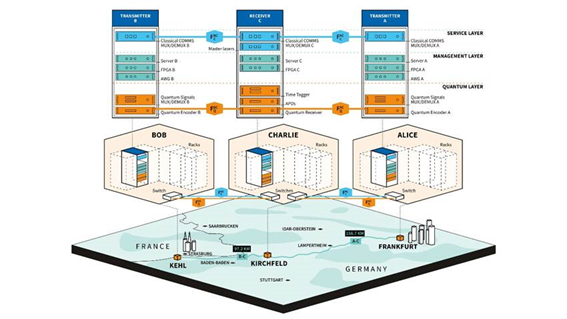
Toshiba has announced the success of a trial that demonstrated coherent quantum communication technology can be deployed on standard telecom infrastructure.
The company showed simple semiconductor technology can be used instead of complex cryogenic components. This development could unlock new possibilities for sharing quantum-safe information across both national and international distances and paving the way for new quantum-enhanced applications.
The results of this world-first trial by Toshiba have been published in journal Nature. The key breakthrough is a new system architecture that replaces unwieldy, complex cryogenic components with simple semiconductor-based devices.
For the first time in a real-life deployment, quantum information encoded in the phase of a quantum light signal was shown to be perfectly stable, despite propagating over 250 km of deployed telecom fibre, using only off-the-shelf components and operating in a typical colocation data centre at room temperature.

Mirko Pittaluga, lead author of the study, commented, “Through this trial, we completely re-engineered the way that quantum information is measured and stabilised, with a unique optical configuration that completely eliminates the need for cryogenic lab-grade equipment.”
Robert Woodward, team leader at Toshiba Europe added, “The key breakthrough was using semiconductor avalanche photodiodes. This hugely simplifies deployment and enables it to go from the lab to national and international networks.”
